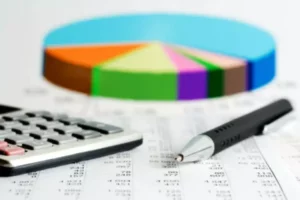Understanding a Balance Sheet With Examples and Video Bench Accounting
Content

Suppose Direct Delivery pays $1,200 on December 1 for a six-month insurance premium on its delivery vehicle. Between December 1 and December 31, $200 worth of insurance premium is «used up» or «expires». The expired amount will be reported as Insurance Expense on December’s income statement.
- Accept debit and credit cards with safe, secure, and convenient Payment Solutions from Chase anywhere you do business – online, in-store, and on-the-go.
- Investors, business owners, and accountants can use this information to give a book value to the business, but it can be used for so much more.
- Property, plant, and equipment are tangible assets that are used in company operations and expected to be used over more than one fiscal period.
- A balance sheet analysis helps you get a sense of your current standing, and the first step is to look at your balance sheets from two or more accounting periods.
- To calculate EPS, you take the total net income and divide it by the number of outstanding shares of the company.
- Sorry guys — you can’t take out a loan and make your share of the company more valuable.
Similar to the Income Statement, Acme manufacturing’s Balance sheet can be assessed through a variety of ratios and functions. While credit decisions should not be based on the analysis of a balance sheet or income statement alone, it does offer insight to show general business health. Most non-current assets reported on a balance sheet are shown with depreciation. Since all assets are recorded on the balance sheet at the price you paid for them, you have to account for the reduction of their value over time.
What’s included in a balance sheet?
We will discuss the kinds of liabilities later on in the chapter. It’s anything that will incur an expense or cost in the future — a debt or amount owed is a liability. Both current and non-current liabilities are included in the liabilities section of the balance sheet. Investopedia defines an asset as “Anything of value that can be converted into cash.” In other words, an asset provides economic value to businesses and organizations. In the asset sections mentioned above, the accounts are listed in the descending order of their liquidity .
- Morgan’s low cost retirement plans are built for you and your employees.
- Find out whether your business is eligible for this COVID-19 business tax credit.
- Owners’ equity, also known as shareholders’ equity, typically refers to anything that belongs to the owners of a business after any liabilities are accounted for.
- Accounts Payables, or AP, is the amount a company owes suppliers for items or services purchased on credit.
- This reflects the fact that Walmart is a big-box retailer with its many stores and online fulfillment centers stocked with thousands of items ready for sale.
- The key point is that these can typically be readily converted into cash the company can use.
Current Assets is an account on a balance sheet that represents the value of all assets that could be converted into cash within one year. With a greater understanding of a balance sheet and how it is constructed, we can review some techniques used to analyze the information contained within a balance sheet. It is important to note that a balance sheet is just a snapshot of the company’s financial position at a single point in time. If you are a shareholder of a company or a potential investor, it is important to understand how the balance sheet is structured, how to read one, and the basics of how to analyze it. Liabilities expected to be settled or paid within one year or one operating cycle of the business, whichever is greater, are classified as current liabilities.
Investor Publications
Similarly, balance sheet are listed in the order of their priority for payment. In financial reporting, the terms «current» and «non-current» are synonymous with the terms «short-term» and «long-term,» respectively, and are used interchangeably. Yes, the balance sheet will always balance since the entry for shareholders’ equity will always be the remainder or difference between a company’s total assets and its total liabilities. If a company’s assets are worth more than its liabilities, the result is positive net equity.

This also means the shareholders’ funds do not belong to the company as it rightfully belongs to its shareholders’. Hence from the company’s perspective, the shareholders’ funds are an obligation payable to shareholders’. Hence this is shown on the liabilities side of the balance sheet. Owners’ equity refers to the money that the owners of the business originally invested. Unlike liabilities, this money generally isn’t expected to be paid back fully for some time, likely until the business is sold to a third party or shuts down for some other reason.
Business Checking
With this information in mind, let’s go over the step-by-step process of creating a balance sheet. Katrina Ávila Munichiello is an experienced editor, writer, fact-checker, and proofreader with more than fourteen years of experience working with print and online publications. Full BioRichard Loth has 40+ years of experience in banking, corporate financial consulting, and nonprofit development assistance programs. Investopedia requires writers to use primary sources to support their work. These include white papers, government data, original reporting, and interviews with industry experts. We also reference original research from other reputable publishers where appropriate.


